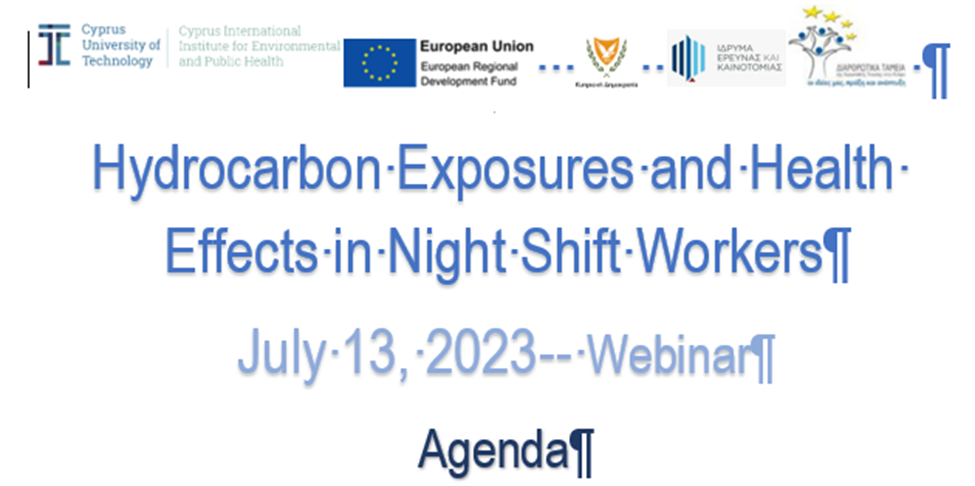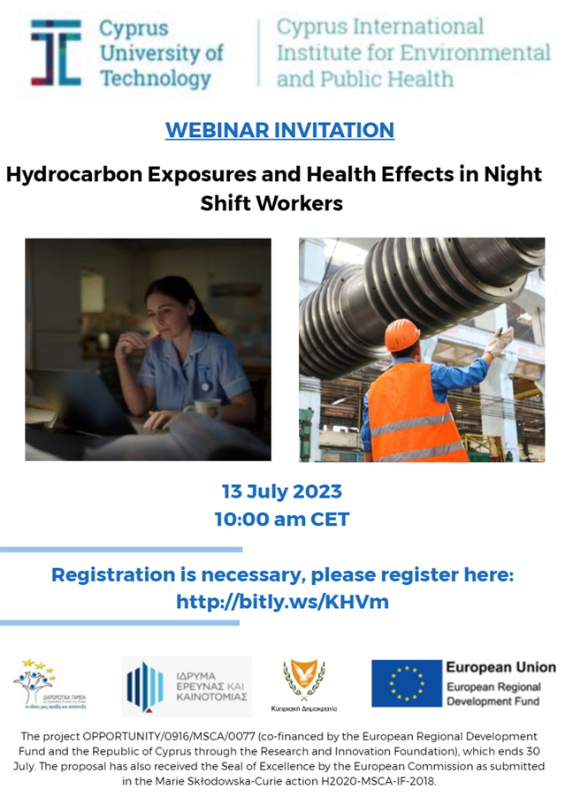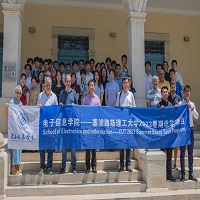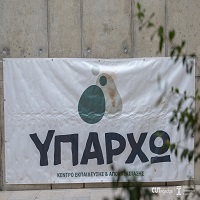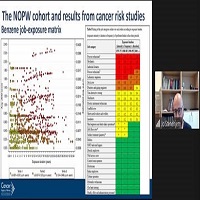On July 13, 2023, a webinar on Hydrocarbon exposures and health effects on night shift workers was organized by the Cyprus International Institute for Environmental and Public Health, Cyprus University of Technology(CUT).
The webinar was part of the OPPORTUNITY/0916/MSCA/0077 EXPOSOWORK project co-financed by the European Regional Development Fund and the Republic of Cyprus through the Research and Innovation Foundation.
The host introduced the topic to the audience by laying out facts of night shift work (NSW) and the importance of chemical exposures on human health, as evidenced by studies conducted in Cyprus, Norway, and Bulgaria. A total of 20 experts from different parts of Europe attended the webinar.
Dr. Stenehjem from the Cancer Registry of Norway presented the Norwegian offshore petroleum workers (NOPW) cohort with main emphasis on hydrocarbon exposures and cancer risk in these offshore workers. The NOPW cohort was established in 1998 with extensive questionnaire-based data.
More than 4000 cancer cases were recorded by 2017, being close to 5000, by now. The NOPW monitors the health of offshore petroleum workers, showing increased cancer risk of 7% for males and 13% for females for all cancer sites, overall. Increased cancer risk in male and female offshore petroleum workers was reported, specifically for plural mesothelioma and melanoma, as well as breast cancer in males. A potential link between rotating shift work and prostate cancer was also identified.
Dr. Makris from CUT provided an overview of the effects of NSW on early stages of chronic diseases, particularly related to inflammatory and oxidative stress processes. He highlighted the potential of NSW for tissue oxidative damage and chronic inflammatory responses, which can have adverse consequences for human health and that they may act as early-stage signals of chronic disease onset and progression. He presented the EXPOSOWORK findings in night shift workers employed in Bulgarian gas stations.
Dr. Makris presented median BTEX values that did not exceed regulatory safety limits at the workplace. He noted that some differences in airborne BTEX levels were found based on shift work (day vs night) that could influence metabolism of BTEX. He also discussed the chrono-modulated metabolism of xenobiotics, focusing on the EXPOSOWORK project. Dr. Makris emphasized that circadian disruption is common, affecting approximately 20% of the European workforce involved in non-standard work schedules.
Dr. Narui from the National Institute of Occupational Health (STAMI) in Norway talked about the complex disease process of carcinogenesis and its biological mechanisms. His team studied the increased risk of breast cancer in nurses who worked 6 or more consecutive night shifts for more than five years. He highlighted the role of various environmental factors such as chemicals, biological agents, and physical agents in the development of cancer. He explained that exposure to these agents can lead to genetic changes in cells, which, in the presence of continued exposure, may progress to cancer through a multi-step process. He also emphasized the importance of reactive oxygen species and nitrogen species, as part of oxidative stress and chronic inflammation, contributing to carcinogenesis.
Dr. Narui focused on two specific factors: benzene exposure and NSW. Benzene toxicity arises due to metabolic activation that damages DNA and affects DNA repair processes. It also induces oxidative stress with reactive oxygen species and chronic inflammation leading to liver, lung and bone marrow toxicity. He suggested a possible common network pathway between exposure to chemicals like benzene and NSW.
Dr. Ioannides from the AAI Scientific Cultural Services Ltd., and Dr. Eleftheriou from the C.P. FoodLab LtD presented the findings of their PLANS-EMB project, which examined the effects of volatile organics, specifically BTEX, on human brain and the environment near gas stations in Cyprus. Dr. Ioannides used electroencephalography (EEG) to study the resting state brain activity of controls and people working in petrol stations. The analysis demonstrated that features of beta1 (12 – 20 Hz) activity of the eyes closed EEG activity could distinguish controls (not working in petrol) from petrol station workers. He discussed the influence of chemical substances in the environment and the need for further research to understand their impact on the human brain, including the possible interactions between reactivity to chemical concentrations and other factors, like sleep.
Dr. Eleftheriou reported high concentrations of BTEX in air samples collected from petrol stations, rather than the homes surrounding the gas station. The combined analysis of the EEG and chemical analysis showed excellent discriminatory ability between controls and petrol station workers, implying a good correlation between environmental volatile organic chemical levels and brain activity measured through EEG recordings. The findings highlighted the need for effective measures to reduce petrol station workers' exposure to BTEX and emphasized the importance of systematically monitoring air quality in and around gas stations.
Dr. Heibati, from the Norway Cancer Registry presented the study design for the new cohort study on exposures to benzene during NSW and the risk of lymphohaematopoietic (LH) cancer in Norwegian offshore petroleum workers. The study population includes two cohorts: the Norwegian offshore petroleum workers cohort (NOWP), consisting of individuals employed between 1965 and 1998, and the Heliport cohort, which included about 80,000 individuals from 2000 to 2021. He mentioned the importance of investigating the temporal aspects of shift work and environmental-occupational stress on biomarkers of oxidative stress, damage, and inflammation with emphasis on whether the benzene-leukemia/lymphoma association is affected by NSW.
Overall, the participants acknowledged the complex relationship between chemical exposures, NSW and health outcomes, and the importance of studying their interplay on human health. Mechanistic studies, sleep structure analysis, and -omics approaches were identified as important tools and approaches for better understanding the biological mechanisms involved with carcinogenesis in night shift workers and their hydrocarbon exposures.
The project OPPORTUNITY/0916/MSCA/0077 (co-financed by the European Regional Development Fund and the Republic of Cyprus through the Research and Innovation Foundation). The proposal has also received the Seal of Excellence by the European Commission as submitted in the Marie Skłodowska-Curie action H2020-MSCA-IF-2018.
International Webinar at CUT: Hydrocarbon Exposures and Health Effects in Night Shift Workers
On July 13, 2023, a webinar on Hydrocarbon exposures and health effects on night shift workers was organized by the Cyprus International Institute for Environmental and Public Health, Cyprus University of Technology(CUT).
The webinar was part of the OPPORTUNITY/0916/MSCA/0077 EXPOSOWORK project co-financed by the European Regional Development Fund and the Republic of Cyprus through the Research and Innovation Foundation.
The host introduced the topic to the audience by laying out facts of night shift work (NSW) and the importance of chemical exposures on human health, as evidenced by studies conducted in Cyprus, Norway, and Bulgaria. A total of 20 experts from different parts of Europe attended the webinar.
Dr. Stenehjem from the Cancer Registry of Norway presented the Norwegian offshore petroleum workers (NOPW) cohort with main emphasis on hydrocarbon exposures and cancer risk in these offshore workers. The NOPW cohort was established in 1998 with extensive questionnaire-based data.
More than 4000 cancer cases were recorded by 2017, being close to 5000, by now. The NOPW monitors the health of offshore petroleum workers, showing increased cancer risk of 7% for males and 13% for females for all cancer sites, overall. Increased cancer risk in male and female offshore petroleum workers was reported, specifically for plural mesothelioma and melanoma, as well as breast cancer in males. A potential link between rotating shift work and prostate cancer was also identified.
Dr. Makris from CUT provided an overview of the effects of NSW on early stages of chronic diseases, particularly related to inflammatory and oxidative stress processes. He highlighted the potential of NSW for tissue oxidative damage and chronic inflammatory responses, which can have adverse consequences for human health and that they may act as early-stage signals of chronic disease onset and progression. He presented the EXPOSOWORK findings in night shift workers employed in Bulgarian gas stations.
Dr. Makris presented median BTEX values that did not exceed regulatory safety limits at the workplace. He noted that some differences in airborne BTEX levels were found based on shift work (day vs night) that could influence metabolism of BTEX. He also discussed the chrono-modulated metabolism of xenobiotics, focusing on the EXPOSOWORK project. Dr. Makris emphasized that circadian disruption is common, affecting approximately 20% of the European workforce involved in non-standard work schedules.
Dr. Narui from the National Institute of Occupational Health (STAMI) in Norway talked about the complex disease process of carcinogenesis and its biological mechanisms. His team studied the increased risk of breast cancer in nurses who worked 6 or more consecutive night shifts for more than five years. He highlighted the role of various environmental factors such as chemicals, biological agents, and physical agents in the development of cancer. He explained that exposure to these agents can lead to genetic changes in cells, which, in the presence of continued exposure, may progress to cancer through a multi-step process. He also emphasized the importance of reactive oxygen species and nitrogen species, as part of oxidative stress and chronic inflammation, contributing to carcinogenesis.
Dr. Narui focused on two specific factors: benzene exposure and NSW. Benzene toxicity arises due to metabolic activation that damages DNA and affects DNA repair processes. It also induces oxidative stress with reactive oxygen species and chronic inflammation leading to liver, lung and bone marrow toxicity. He suggested a possible common network pathway between exposure to chemicals like benzene and NSW.
Dr. Ioannides from the AAI Scientific Cultural Services Ltd., and Dr. Eleftheriou from the C.P. FoodLab LtD presented the findings of their PLANS-EMB project, which examined the effects of volatile organics, specifically BTEX, on human brain and the environment near gas stations in Cyprus. Dr. Ioannides used electroencephalography (EEG) to study the resting state brain activity of controls and people working in petrol stations. The analysis demonstrated that features of beta1 (12 – 20 Hz) activity of the eyes closed EEG activity could distinguish controls (not working in petrol) from petrol station workers. He discussed the influence of chemical substances in the environment and the need for further research to understand their impact on the human brain, including the possible interactions between reactivity to chemical concentrations and other factors, like sleep.
Dr. Eleftheriou reported high concentrations of BTEX in air samples collected from petrol stations, rather than the homes surrounding the gas station. The combined analysis of the EEG and chemical analysis showed excellent discriminatory ability between controls and petrol station workers, implying a good correlation between environmental volatile organic chemical levels and brain activity measured through EEG recordings. The findings highlighted the need for effective measures to reduce petrol station workers' exposure to BTEX and emphasized the importance of systematically monitoring air quality in and around gas stations.
Dr. Heibati, from the Norway Cancer Registry presented the study design for the new cohort study on exposures to benzene during NSW and the risk of lymphohaematopoietic (LH) cancer in Norwegian offshore petroleum workers. The study population includes two cohorts: the Norwegian offshore petroleum workers cohort (NOWP), consisting of individuals employed between 1965 and 1998, and the Heliport cohort, which included about 80,000 individuals from 2000 to 2021. He mentioned the importance of investigating the temporal aspects of shift work and environmental-occupational stress on biomarkers of oxidative stress, damage, and inflammation with emphasis on whether the benzene-leukemia/lymphoma association is affected by NSW.
Overall, the participants acknowledged the complex relationship between chemical exposures, NSW and health outcomes, and the importance of studying their interplay on human health. Mechanistic studies, sleep structure analysis, and -omics approaches were identified as important tools and approaches for better understanding the biological mechanisms involved with carcinogenesis in night shift workers and their hydrocarbon exposures.
The project OPPORTUNITY/0916/MSCA/0077 (co-financed by the European Regional Development Fund and the Republic of Cyprus through the Research and Innovation Foundation). The proposal has also received the Seal of Excellence by the European Commission as submitted in the Marie Skłodowska-Curie action H2020-MSCA-IF-2018.

